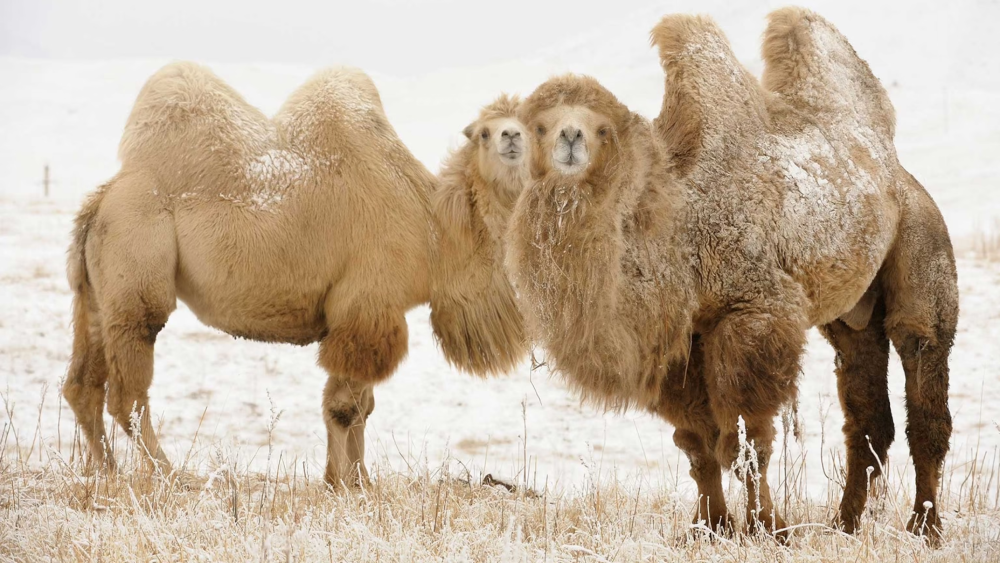Nestled within the rugged landscapes of Central Asia lies an extraordinary creature, one that has weathered the harsh conditions of its habitat for millennia. The Bactrian camel, with its distinctive two humps and stoic demeanor, is not merely a survivor of the desert; it is a symbol of resilience and adaptation. From its unique physiology to its integral role in the cultures of the region, the Bactrian camel stands as a testament to the ingenuity of nature and the enduring bond between humans and animals.
Anatomy and Physiology
At first glance, the most striking feature of the Bactrian camel is its dual-humped silhouette, a stark contrast to the single-humped dromedary camel found in the deserts of Africa and the Arabian Peninsula. These humps serve as reservoirs of fat, allowing the camel to sustain itself through long periods of scarcity. Contrary to popular belief, it is not water that these humps store but rather energy-rich fat, which can be metabolized into both water and nutrients when needed.
Beneath its shaggy exterior lies a host of adaptations that enable the Bactrian camel to thrive in its arid environment. Its broad, flat feet are equipped with thick, calloused pads that provide traction on shifting sands and rocky terrain. Meanwhile, its nostrils can close to protect against sandstorms, and its long, bushy eyebrows shield its eyes from the glaring sun. Additionally, the camel’s ability to regulate its body temperature allows it to endure extreme fluctuations in temperature, from scorching daytime heat to freezing nighttime cold.
Behavior and Social Structure
Despite its rugged appearance, the Bactrian camel is a remarkably social creature, often forming tight-knit groups known as herds. These herds, typically consisting of several females and their offspring led by a dominant male, provide safety in numbers and facilitate cooperative behaviors such as mutual grooming and childcare. Within the herd, a complex hierarchy exists, with individuals vying for status through displays of dominance and submission.
Communication among Bactrian camels is largely non-verbal, relying on a combination of vocalizations, body language, and olfactory cues. Grunts, groans, and bellows convey a range of emotions and intentions, from aggression to affection, while subtle shifts in posture and facial expression serve as signals of social status and intent. Additionally, the camel’s keen sense of smell allows it to detect pheromones and other chemical signals, facilitating communication over long distances.
Cultural Significance
Beyond its ecological role, the Bactrian camel holds profound cultural significance for the people of Central Asia, where it has been domesticated for thousands of years. Nomadic tribes such as the Kazakhs, Kyrgyz, and Mongols rely on camels for transportation, milk, meat, and wool, making them indispensable partners in their traditional way of life. Even today, camels remain an integral part of the region’s economy and cultural identity, participating in festivals, races, and rituals that celebrate their enduring bond with humanity.
In art, literature, and folklore, the Bactrian camel features prominently as a symbol of strength, endurance, and hospitality. From ancient petroglyphs to contemporary paintings, depictions of camels adorn the walls of caves and the pages of manuscripts, serving as reminders of the camel’s central role in the history and heritage of the region. In literature, camels are popular for their loyalty and resilience, often depicted as steadfast companions on epic journeys across the desert sands.
Conservation and Future Challenges
Despite its cultural significance and ecological importance, the Bactrian camel faces numerous threats to its survival in the modern world. Habitat loss, overgrazing, poaching, and climate change are putting increasing pressure on wild camel populations, pushing them to the brink of extinction. In response, conservation efforts are underway to protect critical habitats, mitigate human-wildlife conflict, and promote sustainable practices among local communities.
At the same time, advances in technology and research are shedding new light on the biology and behavior of Bactrian camels, informing conservation strategies and management practices. Genetic studies have revealed valuable insights into the evolutionary history and genetic diversity of camel populations, while GPS tracking and satellite imagery are helping scientists monitor their movements and habitat use in real-time.
Conclusion
In the vast expanse of Central Asia, where the horizon stretches endlessly and the winds whisper ancient tales, the Bactrian camel roams as a living embodiment of endurance, adaptation, and cultural heritage. From the windswept steppes of Mongolia to the rugged mountains of Afghanistan, the camel’s resilient spirit endures, a timeless symbol of survival in the face of adversity. As stewards of this precious legacy, it is our responsibility to ensure that the Bactrian camel continues to roam the earth for generations to come, a testament to the enduring bond between humans and the natural world.










